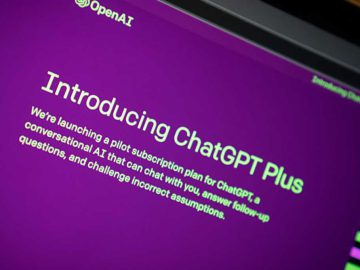Much like having a written version of Alexa or Siri, ChatGPT is an AI-powered chatbot that understands and produces text-based content according to a user’s input, which can be a query or instruction. ChatGPT can do it all, from writing blog posts and ad copy to generating social media posts and emails.
However, its potential for digital marketing can be accelerated with the integration of Chrome extensions. You can find extensions for pretty much any functionality, including but not limited to content writing, email writing, summarization, web search, and more.
Here are the top ChatGPT extensions for Chrome that will take your digital marketing efforts to the next level.
Top ChatGPT Extensions for Chrome to Raise Your Digital Marketing Edge:
Best ChatGPT Add-Ons and Chrome Extensions
Since its release in 2022, ChatGPT has advanced quite a bit. There’s now a GPT Store where you can access pre-trained models to use for different purposes. OpenAI has also introduced GPT4, which is more advanced and can generate longer, more coherent text.
It can also create visuals and tables. You can upload files directly to ChatGPT, and the chatbot will respond to you based on the information it finds in the file. Apart from these native features, ChatGPT can also be made more functional with Chrome extensions.
Let’s discuss a few of them in detail.
Top
chatgpt extensions
2024
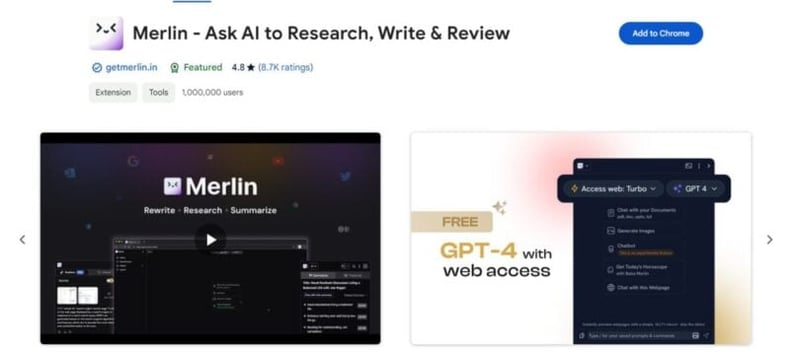
Merlin is a one-stop for most of your digital marketing needs since it claims to be a 26-in-1 extension. It can write, rewrite, summarize, and do a lot more.
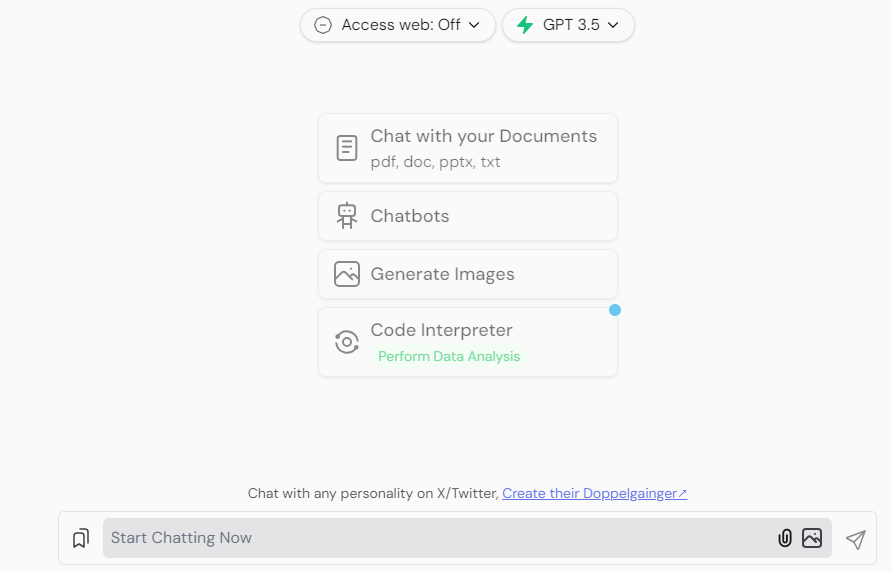
Merlin
With Merlin on, you can chat with AI models of your choice, including GPT4, Claude3, and Gemini, in the same place. It can also generate images for your digital marketing material.

Merlin image generation
Key Features
- Summarizer: Merlin’s summarizer can analyze the whole website in seconds and create summaries for long-form content.

Merlin summarizer
- AI Writer: Merlin can also write personalized emails, LinkedIn posts, messages, essays, ad copies, product descriptions, and so on.
- AI Search: You can use web search within Merlin to get source links and citations for your data.
- AI Translation: Merlin can translate text into multiple languages, keeping the nuances and tone intact.
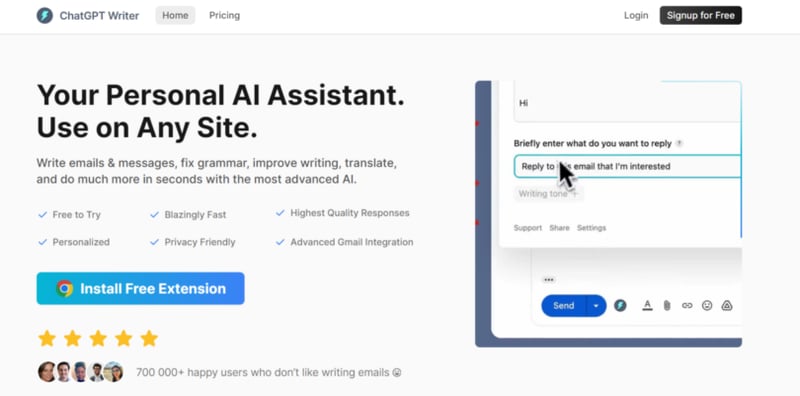
ChatGPT Writer lives up to its name, helping you with your writing tasks. With this tool, you can easily generate text for any purpose, be it a blog post or an email. Besides, it can fix grammar mistakes, change the writing tone, summarize your text, and rephrase it.
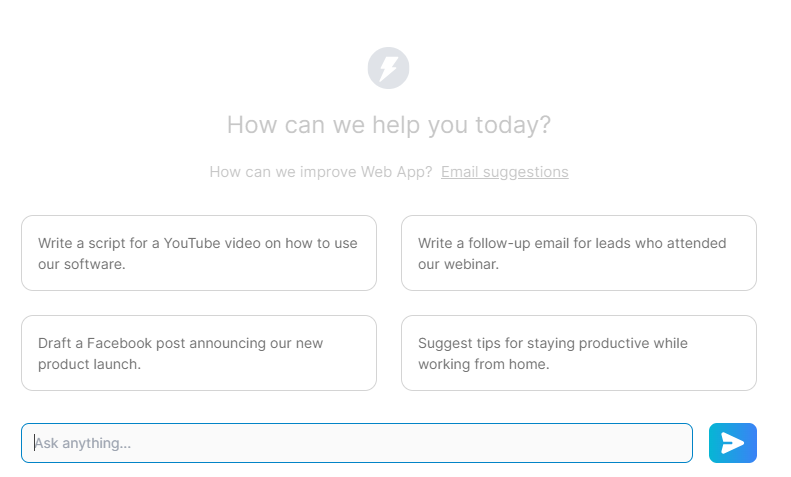
ChatGPT Writer
Key Features
- Different Writing Tones: ChatGPTWriter allows you to choose a writing tone based on your needs. Whether it’s professional, casual, friendly, or persuasive, the tool can help you achieve the perfect tone for your writing.
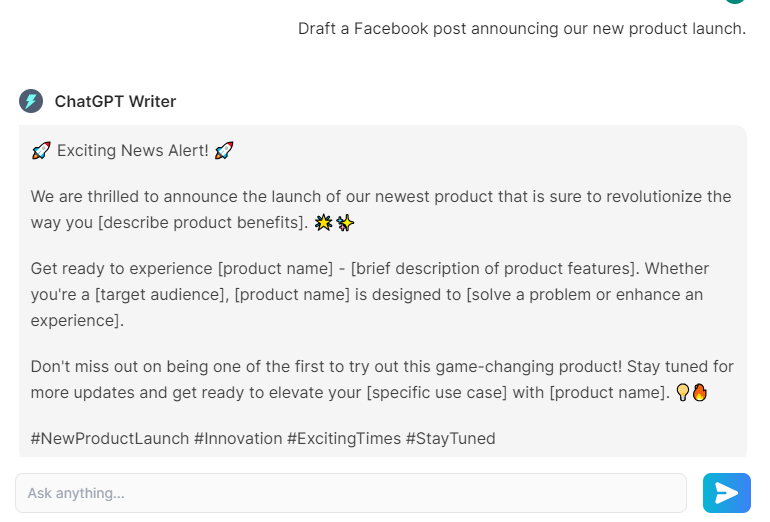
ChatGPT Writer output
- Summarization: Simply feed your lengthy text into ChatGPTWriter, and it will automatically generate a summary for you.
- Grammar Fixes: You don’t need another tool like Grammarly when you have ChatGPTWriter. It can fix grammar mistakes and suggest better alternatives for your text.
- Rephrasing: If you feel like a sentence or paragraph could be reworded, use the rephrasing feature to get alternative versions of your text.

ChatGPT Writer rephrasing
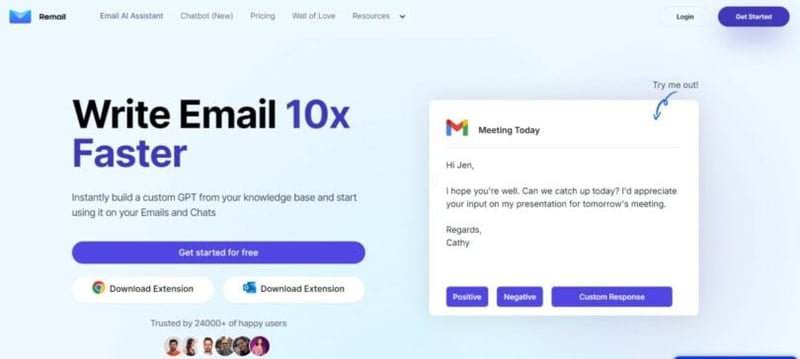
Do you find yourself grappling with the right words to answer an email in one sentence? Remail can help you craft that perfect one-liner.
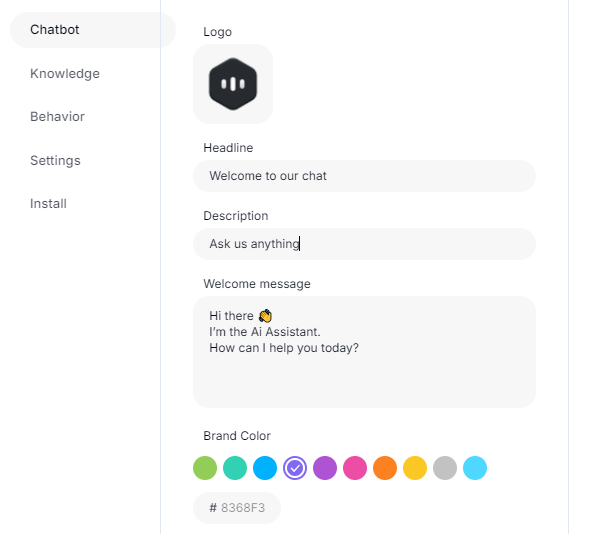
Remail extension
You can choose if you want to send a Positive or a Negative response. The tool also lets you create a custom response to fit your tone and style. Some of the top companies, such as Netflix and Meta, use Remail for their email marketing efforts.
Key Features
- Contextual AI: Since Remail integrates into your email client, it understands the context of the whole email thread to write appropriate responses.
- Multiple Options: You’re not stuck with one option when you use Remail. Instead, the tool provides multiple responses for you to choose from.

Email options in Remail
- Knowledge Base: If you want to use Remail for customer support, you can create a knowledge base of common responses for your team to use.
- Tones: You can define the tone of your reply by setting it to formal, casual, professional, informal, excited, or any of the 10 options.
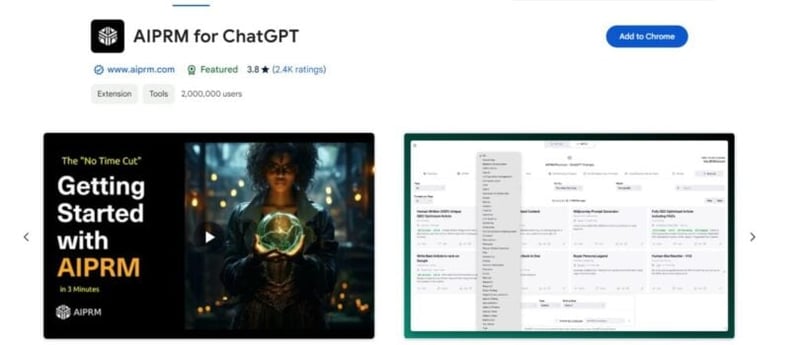
AIPRM for ChatGPT is an extremely helpful ChatGPT extension for marketers, as it comes with more than 4,500 professional one-click prompts. For example, you can choose a prompt to generate a month’s worth of blog titles or opt for another one to write compelling ad copy.
Some of the prompt categories in AIPRM for ChatGPT include marketing, sales, copywriting, SEO, productivity, and customer support. By training this tool, you can also customize its output tone and writing style.
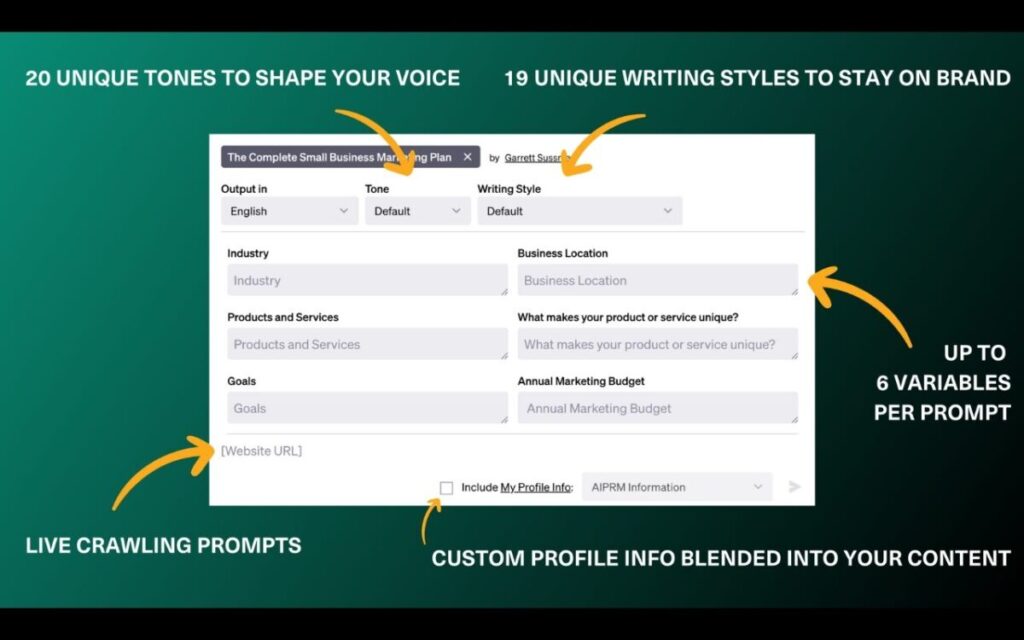
AIPRM for ChatGPT
The extension also supports prompt forking, which allows you to create an entirely new prompt by merging two or more prompts. It also has a feature for creating and using custom templates that can be used for repetitive tasks.
Key Features
- Prompt Variables: You can design prompts with variables that will be replaced by the desired content, such as product names, dates, or numbers.
- Teams: By adding your team members, you can collaborate on your marketing campaigns and improve them together.
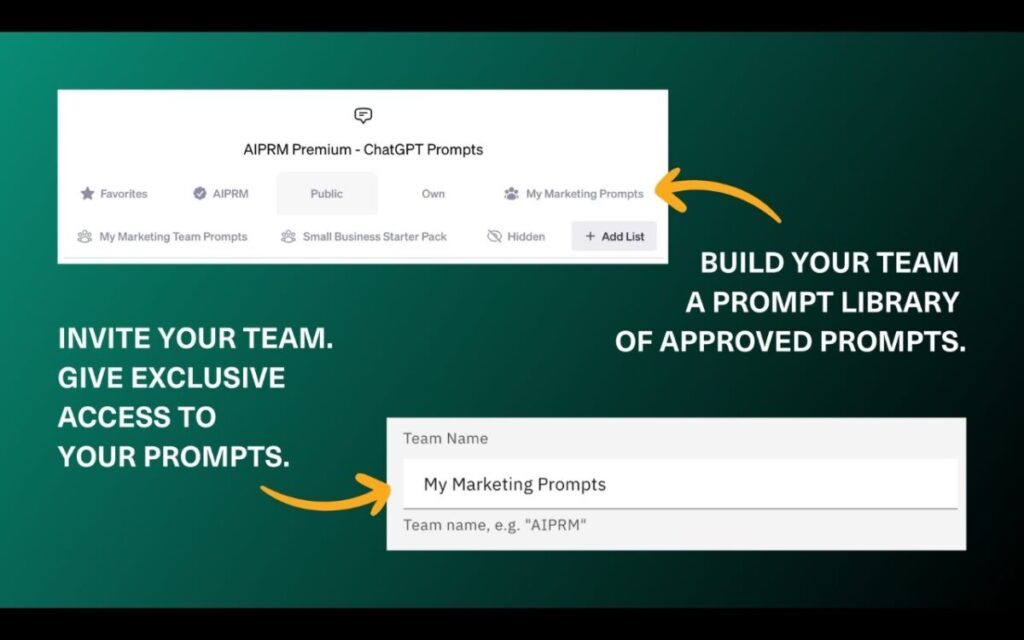
Team collaboration
- Live Crawling: Depending on your use cases, you can create prompts to crawl the web and gather information in real time.
- Community Support: AIPRM for ChatGPT provides access to prompt engineers and support from the company’s support team.
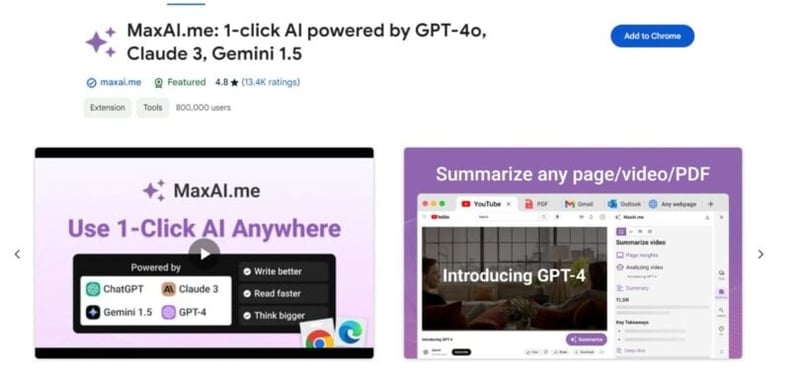
MaxAI.me is an all-in-one generative AI extension that helps improve your writing, check grammar, explain concepts, summarize texts, write content, manage prompts, and more. Besides ChatGPT, it’s also powered by Gemini and Claude.
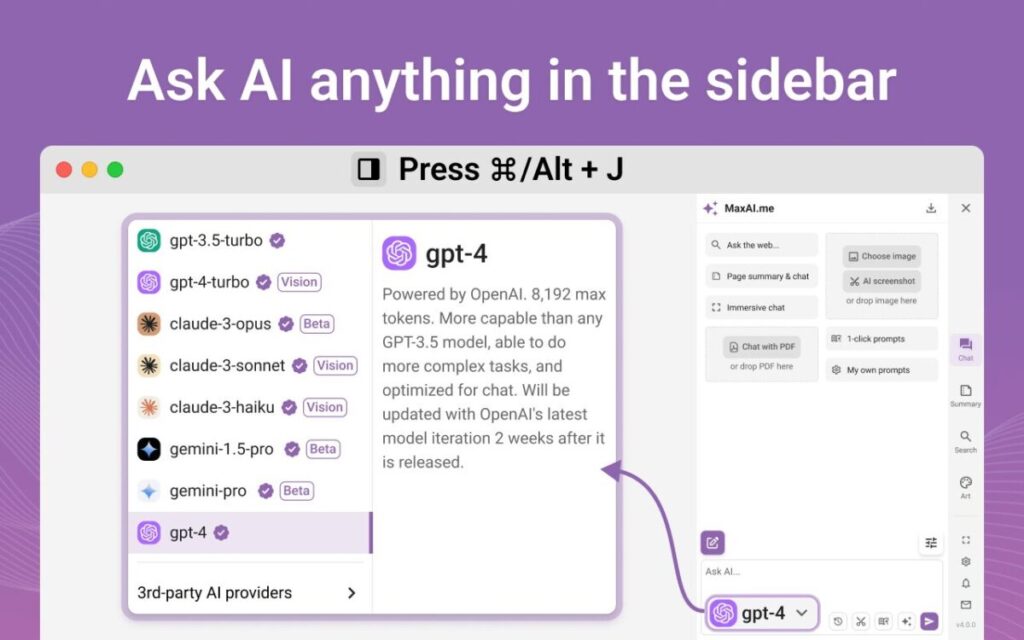
MaxAI.me
Key Features
- AI Chat: You can chat with ChatGPT3.5 and ChatGPT4 within the MaxAI.me extension. So you can get quick responses to your conversations. If you want, you can even compare these answers with those of Claude and Gemini.
- AI Rewriter: The AI Rewriter feature allows you to rewrite sentences and paragraphs instantly. It can make the text longer or shorter. Plus, it can help simplify the text or fix its spelling and grammar.
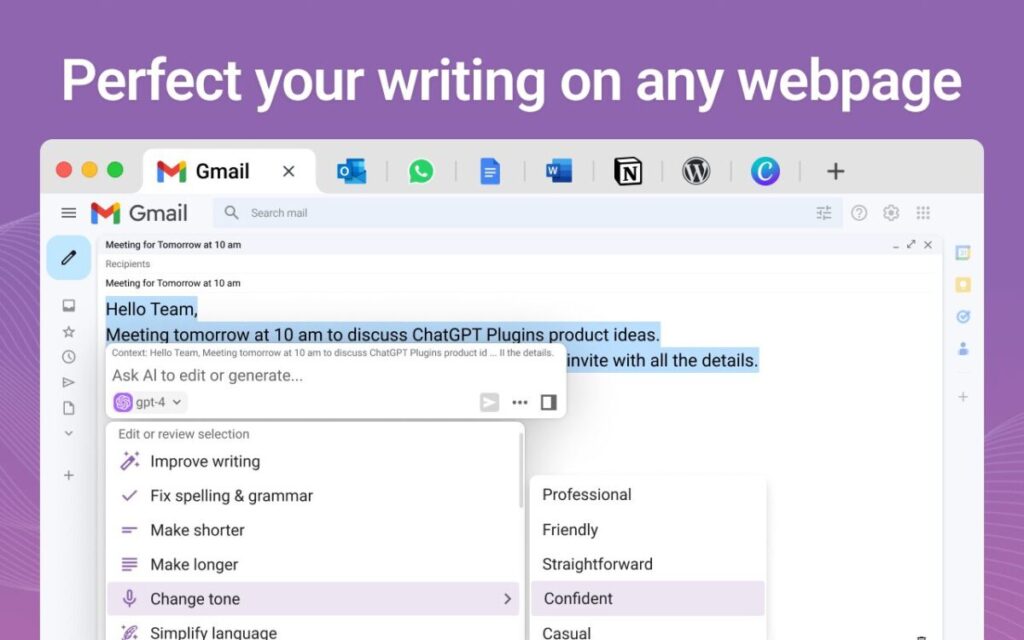
AI writing feature
- AI Instant Reply: With MaxAI.me, you can write replies for your emails and social media platforms. All it takes is a simple click to write responses for your customer support channels, too.
- AI Summary: The tool also allows you to summarize texts and articles. Whether it’s an online article or a long email, MaxAI.me can provide a concise summary in seconds.
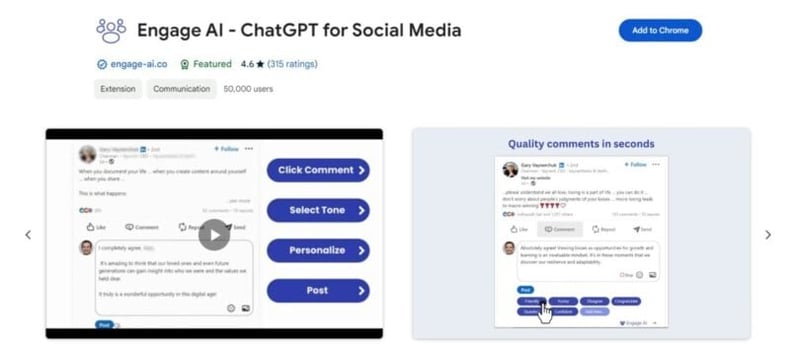
If you’re looking for a ChatGPT extension for social media, Engage AI is an excellent option. It scales your social selling by writing quick LinkedIn comments.
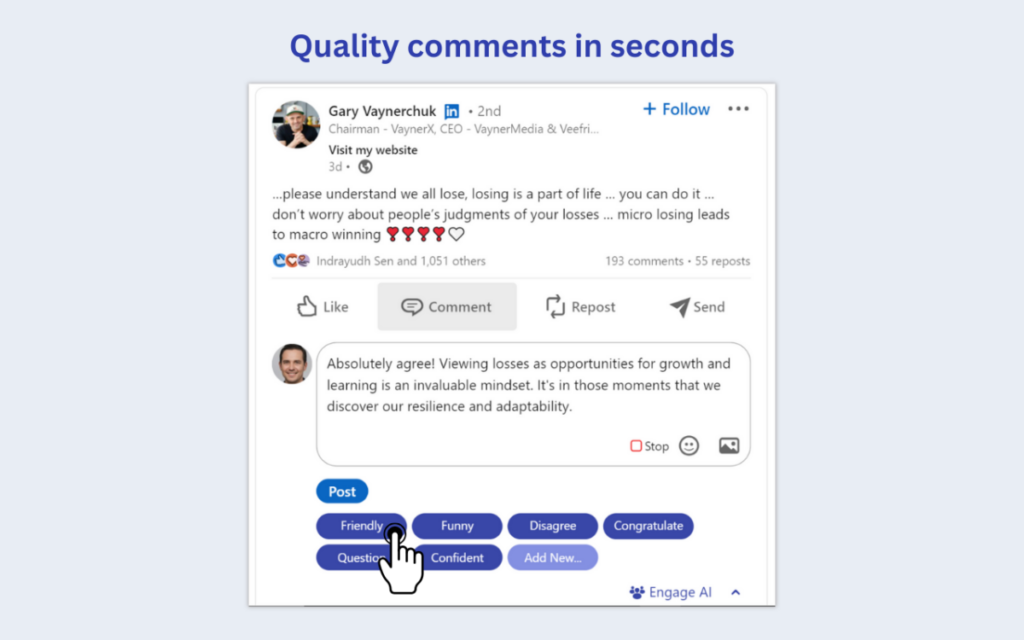
Engage AI
Since the tool takes context into consideration, you won’t be writing generic comments. Instead, your comments will be tailored to match the post’s content, which can greatly improve your engagement.
Key Features
- Second Brain: Engage AI has a new feature called Second Brain, which archives all past comments to ensure efficient recall. Think of it as your personal database for all your previous comments.
- Integrations: The tool also integrates with plenty of marketing tools, such as Hootsuite, HubSpot, and Zapier. So, you can easily combine its capabilities with your current social media strategy.
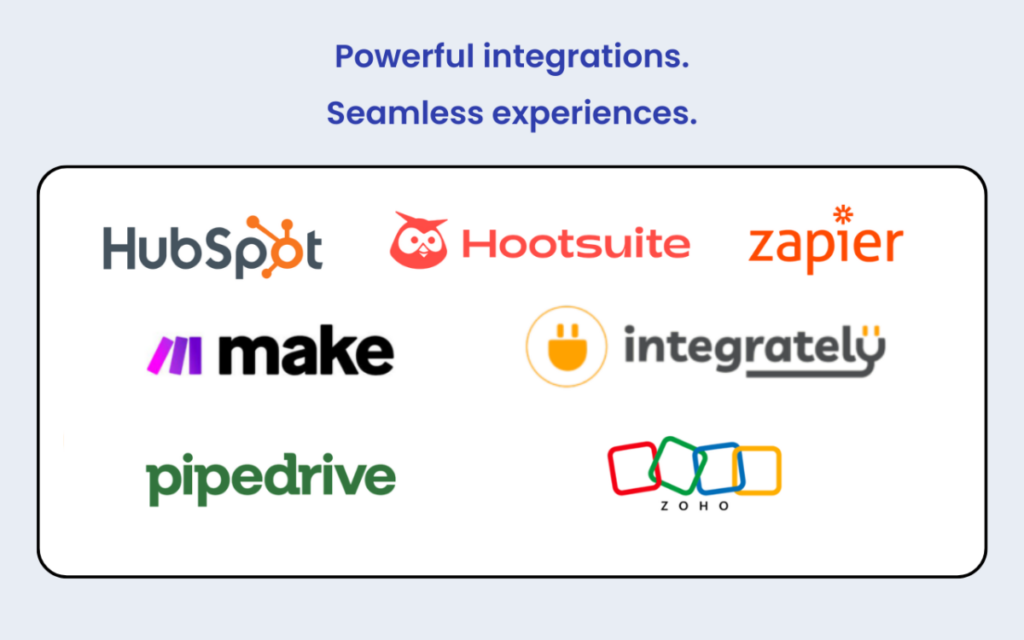
Integration options
- LinkedIn Integration: Since Engage AI works from within the LinkedIn comment section, you do not have to copy and paste your comments. The tool is right there to help you engage in real-time.
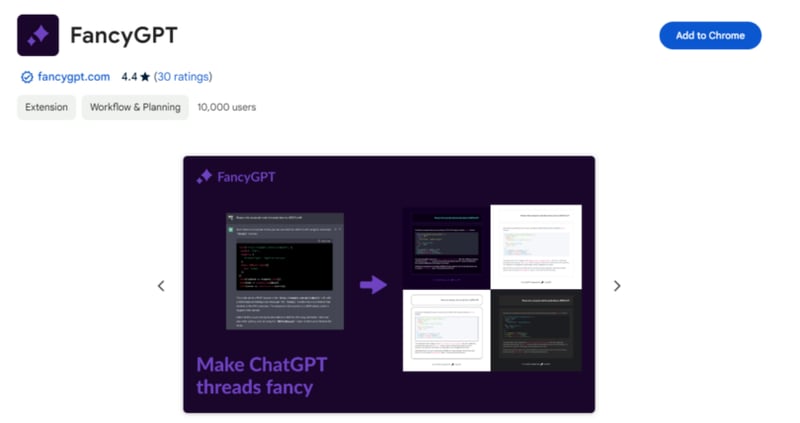
With FancyGPT, you can stylize the way you display your ChatGPT conversations, code snippets, tables, and lists with FancyGPT. You can save them as images, text files, or searchable PDF files in light, dark, or neon designs.
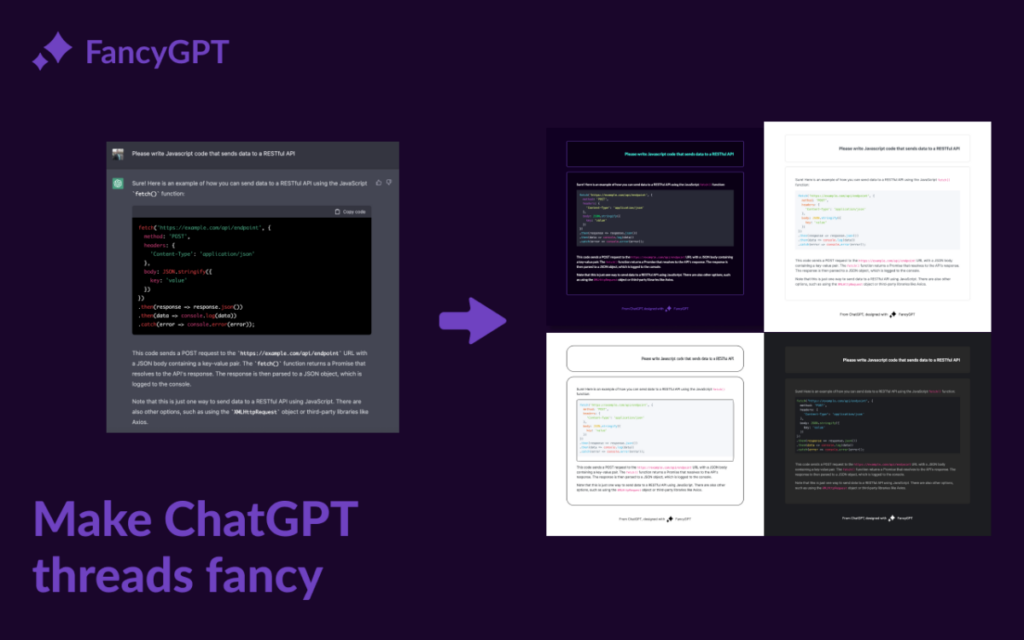
FancyGPT
It’s a useful ChatGPT extension for marketing in industries where aesthetics are important, such as fashion and food.
Key Features
- Message Exclusion: You can choose which messages you want to include or exclude from your styled output, giving you more control over the final result.
- Chat Thread Exports: FancyGPT lets you export chat threads as text. You can share these with your external team or store them as a backup for future reference.
- Social Sharing: The tables and codes you create using FancyGPT can be saved as images to be shared on social media.
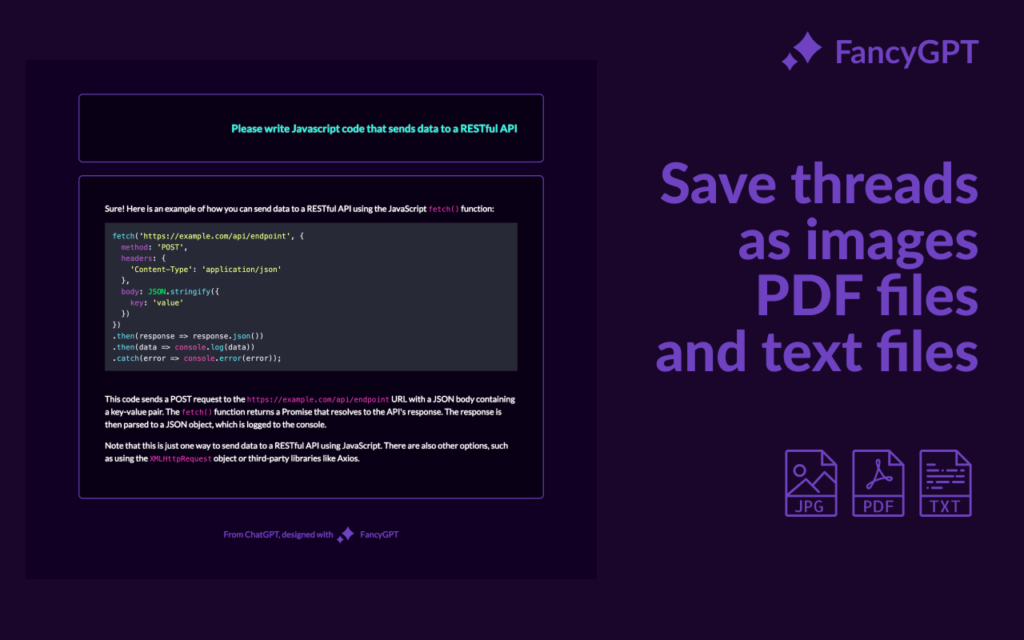
FancyGPT sharing
What Can ChatGPT Do?
ChatGPT can do quite a lot, which is why 40% of marketers use it actively in their day-to-day tasks. With the integration of the GPT Store and advancements in ChatGPT’s native features, the functionality of the platform has greatly expanded. Let’s discuss some use cases of ChatGPT for marketing.
Answering Questions
The most common use case for ChatGPT is answering questions. Whether it’s FAQs, customer support queries, or general inquiries, ChatGPT can handle them all.
Simply input the question and let ChatGPT provide you with a relevant answer. You can also use follow-up questions to get more specific responses.

ChatGPT answering questions
Writing Code and Scripts
In web development, ChatGPT can be a lifesaver when it comes to writing code and scripts. You can input the desired outcome or function; ChatGPT will generate the necessary code for you.
If you want to beautify these code snippets, you can use FancyGPT, an extension we’ve discussed earlier.
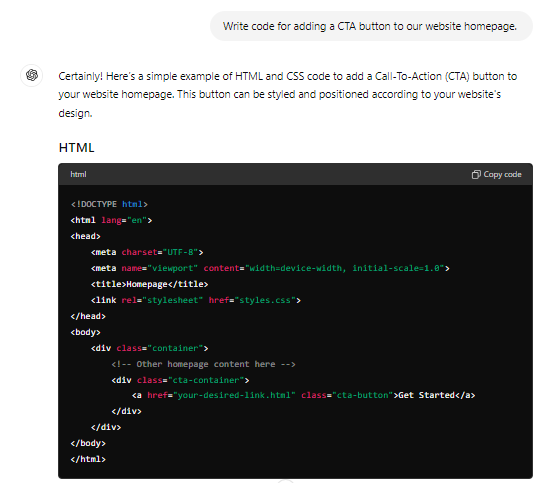
ChatGPT code generation
Automating Content Creation
ChatGPT can also help with content creation. With the ability to generate text in various languages, you can create blog posts, social media captions, ad copies, product descriptions, etc.

ChatGPT caption generation
According to HubSpot, 89% of marketers say that generative AI has helped improve the quality of their content, while 83% say that AI allows them to create more content than they did without it.

Benefits of gen AI for marketers
You can also use different GPTs and Chrome extensions that are specifically made for content generation. These tools not only create new content but also help with paraphrasing and rewriting.
Generating Meta Descriptions
On-page SEO is an integral part of your marketing efforts, and meta descriptions are a component of your SEO strategy. They give prospective readers a glimpse of your content and compel them to click through.
ChatGPT can generate meta descriptions for your website or blog posts with relevant keywords and information about the page’s content. For example, if you want to generate a meta description for an article about “10 Effective Ways to Boost Your Productivity,” you can input the main points and keywords, and ChatGPT will provide you with multiple options to choose from.

ChatGPT meta description generation
Summarizing Customer Feedback
When you get a hundred comments on a blog post, it can be hard to go through them manually. However, you need to analyze consumer sentiment to make sense of the way your content is perceived.
ChatGPT can help in this regard. You can input all the comments and reviews into its system and ask it to generate a summary of the overall customer sentiment. You can even ask ChatGPT to write responses to the comments.
Will ChatGPT Become the New Google Search?
Google reportedly declared a “code red” following ChatGPT’s instant shot to fame in 2022. If the AI bot can supply the answers that Internet users would typically find through Google Search, then the search giant will lose out on ads and e-commerce found on its search results pages.
However, in 2024, Google still holds a 91.47% market share in the search engine market, proving that these initial fears were unfounded.
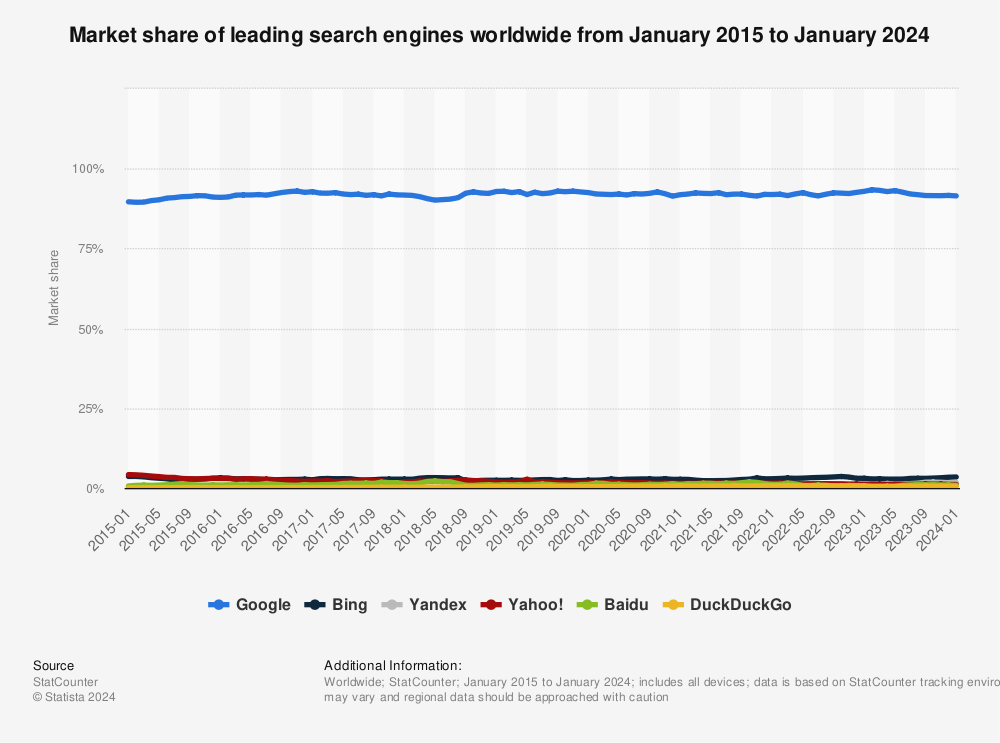 But why hasn’t ChatGPT taken over Google’s throne yet? There are a few reasons for this.
But why hasn’t ChatGPT taken over Google’s throne yet? There are a few reasons for this.
Limited Scope
As mentioned earlier, ChatGPT doesn’t provide up-to-date information. Its knowledge cut-off date is September 2021, meaning any events or updates that have occurred after that will not be included in its responses.

ChatGPT’s knowledge cut-off date
On the other hand, Google updates in real-time. You can find information about events and topics that emerged just minutes ago.
Lack of Attribution
ChatGPT generates responses based on all the information it has consumed, without citing any sources, raising issues of credibility and accuracy, as the answers cannot be verified. You’ll have to use an AI search ChatGPT extension like WebChatGPT to get these sources.
For example, if we search for ‘’when was the first lightbulb invented,’’ ChatGPT only gives us an answer.

ChatGPT response
On the contrary, Google provides sources for its information, allowing users to fact-check and verify the information themselves.
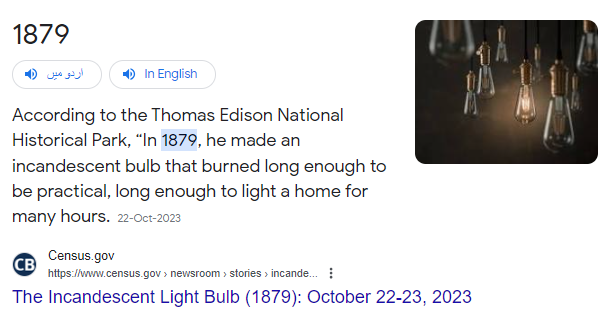
Google search result
Inaccuracy and Bias
ChatGPT itself warns you that its answers are not always accurate, as it has stumbled upon controversial and biased content while training on the internet. You may receive responses that are not entirely factual or could be influenced by a particular viewpoint.
If you’re using ChatGPT for content creation, it’s also advisable to use a plagiarism checker to ensure that the generated content is not copied from existing sources.
Privacy
ChatGPT’s responses come from data it has consumed on the internet, meaning your conversations with ChatGPT are not private. Your input is being used to train and improve AI models, which raises privacy concerns.
How Is ChatGPT Impacting Industries?
Statista data shows that the tech industry is leading the adoption of ChatGPT, followed by education, business services, manufacturing, and finance. Here’s how ChatGPT impacts these industries.

Companies using ChatGPT
- Technical: In the tech sector, ChatGPT is used to assist with customer service, generate code and software, and even develop chatbots for businesses. It can also help with technical support by providing quick and accurate responses to common issues.
- Marketing and Sales: As our suggested tools show, ChatGPT can serve as a great virtual assistant for all sorts of content marketing—from social media to even technical sales content (such as product user guides).
- Education: Teachers and students can use ChatGPT to get quick answers to their questions, generate practice quizzes and exams, get summaries for syllabi, generate flashcards, and assist with research projects.
- Finance: In finance, ChatGPT is used for common use cases like marketing, sales, content writing, social media management, design, and web code development.
- Retail: Businesses in the retail sector also leverage ChatGPT for customer service, product recommendation, personalized shopping experiences, and chatbot development for eCommerce websites.
Wrapping Up
Amid the possibility of ChatGPT becoming even better in the coming years, there’s no turning back. Knowing the tool’s limitations, we can act responsibly as marketers, influencers, and entrepreneurs by ensuring our readers and consumers get factual content that’s sensitive to their needs.
The ChatGPT extensions we’ve discussed in this guide can take the functionality of this chatbot to new heights. We’ve also described some use cases from which you can take inspiration. However, always review the text generated by ChatGPT before you publish it online or share it with your audience.
Frequently Asked Questions
Does ChatGPT have an extension?
Although OpenAI hasn’t released any official extensions for ChatGPT, developers and researchers have created various Chrome and Firefox browser extensions that work with the chatbot.
What is AIPRM for ChatGPT?
AIPRM is a prompt management library with hundreds of prompts for a wide range of industries, ranging from marketing and sales to customer service. ChatGPT users can integrate this extension into their workflow to improve their AI-powered outputs.
Are ChatGPT extensions free?
While some extensions developed by the community may be free, others have a freemium or paid model.
How to install ChatGPT extensions?
Go to the extension store for your preferred browser and search for “ChatGPT extensions”. Choose the one that fits your purpose and click on the “install” button. Then, follow the necessary steps to add it to your browser.
About the Author
![]()
Writer
Geri Mileva, an experienced IP network engineer and distinguished writer at Influencer Marketing Hub, specializes in the realms of the Creator Economy, AI, blockchain, and the Metaverse. Her articles, featured in The Huffington Post, Ravishly, and various other respected newspapers and magazines, offer in-depth analysis and insights into these cutting-edge technology domains. Geri’s technological background enriches her writing, providing a unique perspective that bridges complex technical concepts with accessible, engaging content for diverse audiences.





